Buzzing with Excitement !!!!
Clusters On Wednesday, we had our first Cooper Clusters lunch of the year. These...

Clusters On Wednesday, we had our first Cooper Clusters lunch of the year. These...
In Grade 3, students expand their knowledge and cultivate critical thinking.
Building on Second Grade skills, students apply mastered addition and subtraction strategies to solve problems within 1,000. The curriculum delves into multiplication using visual aids, arrays, and partitioning shapes, emphasizing its connection to addition and division. Students strengthen their mathematical proficiency by applying their grasp of whole numbers and mastering addition, subtraction, multiplication, and division to solve one and two-step story problems. The curriculum extends to a comprehensive fractions study, covering representation and equivalence. Additionally, students refine skills in measurement, including navigating fractions of an inch, telling time to the nearest minute, and measuring liquid and weight. Drawing on their understanding of geometric shapes, students explore polygons, investigating perimeter and area through the lens of multiplication. This streamlined and interconnected approach ensures a robust knowledge of mathematical concepts, empowering students to navigate Third Grade mathematics confidently.
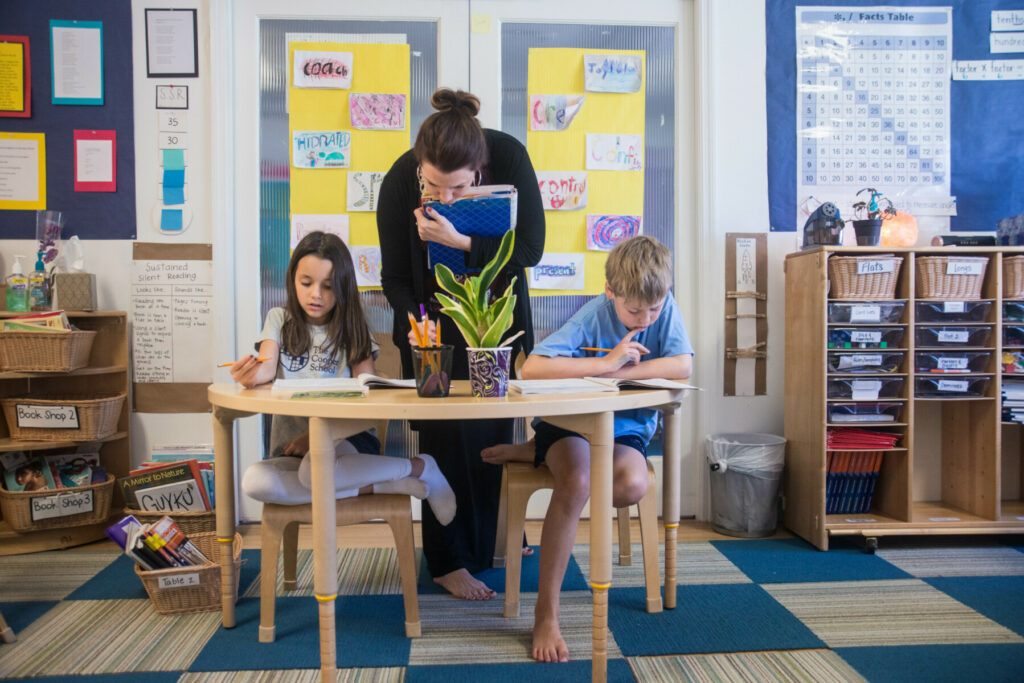
In Third Grade, the reading curriculum seamlessly weaves together decoding, fluency, and comprehension skills acquired in earlier grades, transitioning towards a heightened focus on reading for knowledge acquisition. Students actively engage in reading workshops, where explicit skills are taught and subsequently applied to “just right” books during independent reading sessions. Responses to literature are shared through partnerships, small groups, and whole-class discussions—both verbally and in writing.
Emphasizing the significance of making connections, students explore text-to-text, text-to-self, and text-to-world relationships. They are guided to diversify their book selections to enrich their reading repertoire. A dedicated nonfiction genre study equips students to discern main ideas, identify supporting arguments, and think critically about presented information. The poetry study in Third Grade delves into narrative poetry, highlighting how poems and poetic tools serve as storytelling mediums.
Additionally, a genre study on fairy tales exposes students to characters, character motivations, and classic story elements, further nurturing their growth as proficient and discerning readers.
In the Third Grade writing curriculum, students build upon foundational knowledge acquired in earlier grades, embracing the workshop model to explore diverse genres such as personal narratives, nonfiction, poetry, and persuasive writing. This holistic approach deepens their understanding of the writing process. It guides them through prewriting strategies to craft initial drafts, employing revising and editing skills to refine their narratives, and producing a polished final draft for publication or sharing.
The persuasive writing unit seamlessly integrates with the social studies project on community changemakers, challenging students to analyze speeches and arguments from influential figures and apply these strategies to topics they are passionate about. The culminating writing unit channels students’ creativity, prompting them to use their
writing strategies and delve into fairy tales, crafting variations or adaptations that skillfully incorporate classic elements of these timeless stories. This comprehensive curriculum not only hones their writing skills but also encourages critical thinking and creative expression.
In Third Grade, our spelling approach engages students
in a word study method that applies their foundational skills to conventional spelling. Through individual assessments, students are grouped based on their specific needs, participating in activities that explore the sounds, patterns, and meanings of words. These activities seamlessly build upon their basic phonics knowledge, empowering
them to construct meaning from patterns and apply this understanding to enhance their writing.
Our Third Grade vocabulary curriculum takes a focused approach to explicitly teaching new words within student passages, drawing from both fiction and nonfiction texts to showcase age-appropriate vocabulary in diverse contexts. Students actively engage in various activities designed to expand their word knowledge, fostering an appreciation for nuances and relationships between words. Exploring idioms, metaphors, proverbs, and other forms of wordplay adds depth to their understanding of vocabulary.
Third Grade handwriting instruction introduces students to the art of cursive writing, employing a vertical style that builds upon their mastery of print letters. Emphasizing letter connections and fluid writing, this transition from print to cursive enhances their writing skills.
The Third Grade grammar curriculum dedicates time to explicit instruction on standard conventions and continuous and repeated practice. Students encounter a multitude of sentences for identification and correction of grammar concepts, ensuring ongoing refinement of their understanding of proper punctuation, capitalization, and parts of speech.
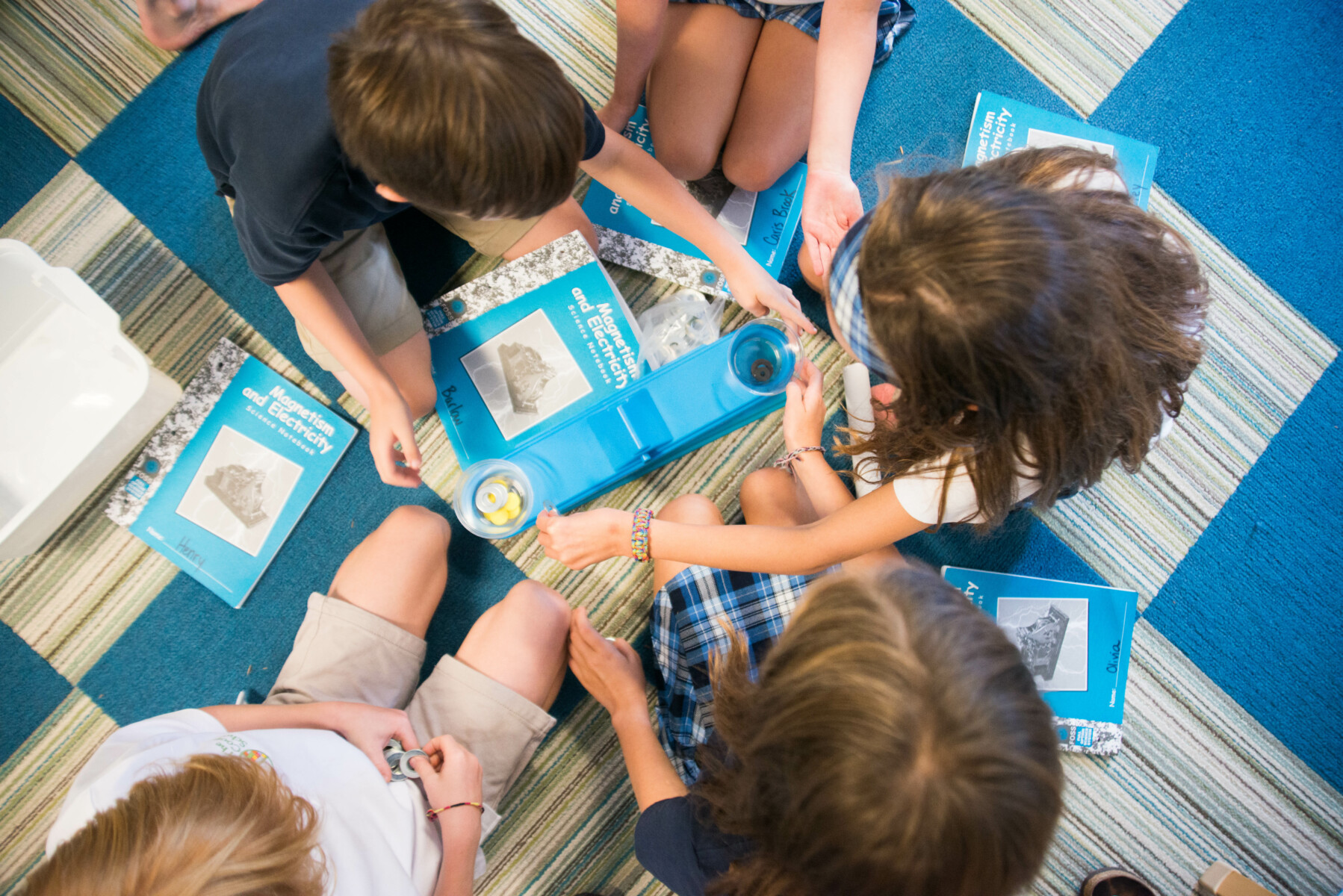
The Third Grade science curriculum extends the foundation laid in earlier grades, amplifying students’ problem-solving skills and mastery of the scientific process. This progression emphasizes the cultivation of engineering thinking to tackle real-world challenges.
Students leverage their understanding of plants and animals across various environments, investigating how distinct traits influence their survival probabilities. Building on this, they delve into the realm of earth materials, actively testing and constructing a protective wall for a garden. The curriculum culminates with a foray into physical science, unraveling the intriguing properties of motion and matter.
The Third Grade social studies curriculum deepens students’ understanding and empathy for diverse cultures and inspires them to contemplate their potential as change makers in the world. Through the study of historical figures who have made impactful changes globally, students engage in research to identify ways in which they, too, can
contribute to positive transformation within their communities.
Broadening their perspectives, students explore the biomes and cultures of Asia, with a particular focus on China, encouraging students to draw parallels and distinctions between this culture and their own. In the final segment, Third Graders embark on a journey through the history of our state, delving into South Carolina’s rich heritage. This exploration encompasses the study of indigenous cultures, early settlers, and the historical role of slavery in the Lowcountry. The curriculum fosters a profound appreciation for the Gullah Geechee culture, illustrating its significant impact on the local area’s cultural landscape.
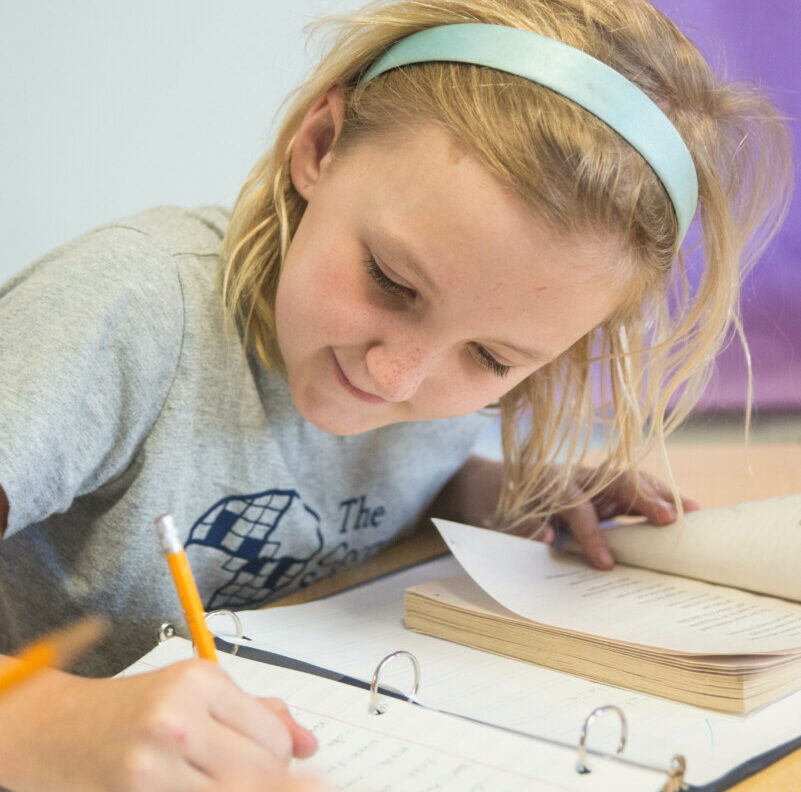
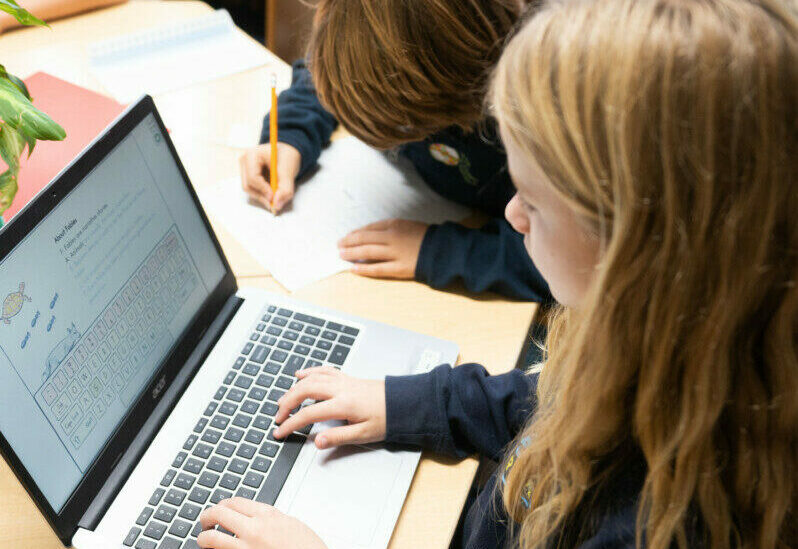
Students cultivate their research, typing, and presentation skills in the Third Grade through computer usage. They seamlessly integrate technology into various aspects of their academic journey, utilizing computers for math fact practice and engaging in educational games. With a focus on fostering independence, students enhance their research abilities, discerning the validity of websites and synthesizing information from multiple sources. The curriculum also emphasizes refining typing skills, empowering students to type and compose their own stories on the computer proficiently.
This unit is designed to instill in students the profound idea that even a single individual possesses the power to make a significant impact on the world. Through in-depth research on contemporary and historical figures, students delve into the lives of changemakers, spanning civil rights, women’s rights, environmental awareness, equal education, and equitable treatment under the law. The unit concludes with a compelling presentation to parents, underscoring that everyone should “have a seat at the table.” This is a poignant reminder of the importance of all voices being heard and the transformative power inherent in each individual’s ability to effect positive change.
This unit aims to delve into the intricate concepts of values, beliefs, and culture, fostering a nuanced exploration that involves comparing and contrasting these elements for a more comprehensive global understanding. Commencing with an exploration of the diverse biomes in Asia, the focus turned to the Mongolian people, initiating crucial conversations about culture. Through an introspective examination of family values and beliefs, students defined and identified their cultural foundations. Subsequently, the unit advanced to a comparative study of China and Chinese culture, with students engaging in a cross-cultural project that included connecting with peers in Chengdu, China. As students grappled with essential questions such as “Who am I? Where am I from? Where am I going?” a profound exploration of culture unfolded, prompting a deeper understanding of self and others.
This unit is designed to cultivate a richer understanding of our local history and culture, which has profoundly influenced the distinctive character of the Lowcountry and Charleston area. Students embark on a comprehensive exploration of our state’s history, encompassing its geography, native peoples, and the pivotal role of slavery in shaping our unique cultural tapestry. Through immersive experiences such as field trips and insights from guest experts, students gain firsthand insights into the impact of slavery and the resilient preservation of culture while creating a new one. The project’s culmination is marked by a vibrant celebration of this culture, featuring food and music, providing a meaningful opportunity to share the depth of their discoveries with their families.
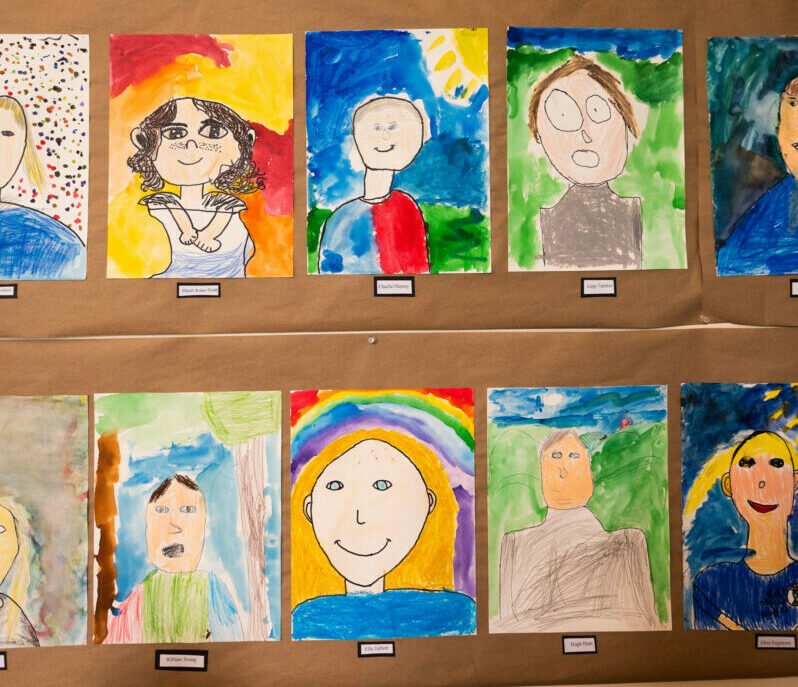
Third Grade artists have a strong foundation in the elements and principles of art and an idea of what art processes interest them as individuals. Students participate in mini-lessons based on art history, developing skills while working with new art materials. Students are introduced to the eight Studio Habits of Mind beginning in Third Grade. The eight Studio Habits of Mind are guidelines for artistic discovery and growth: develop craft, envision, express, stretch & explore, observe, reflect, engage & persist, and understand art worlds. Students participate in discussing these and use them to reflect individually and as a class on what is learned. Students are encouraged to use the studio habits of mind in their artist statements for the art show to explain artistic growth. Third Graders create blue and white ginger jars out of cardboard for their Asia study.
Third Grade PE class aims to refine the skills learned in previous years further. The class emphasizes the rules and strategies of different team sports. This includes soccer, basketball, and dodgeball. They will learn to appreciate the importance of teamwork, leadership, and cooperation in sports.
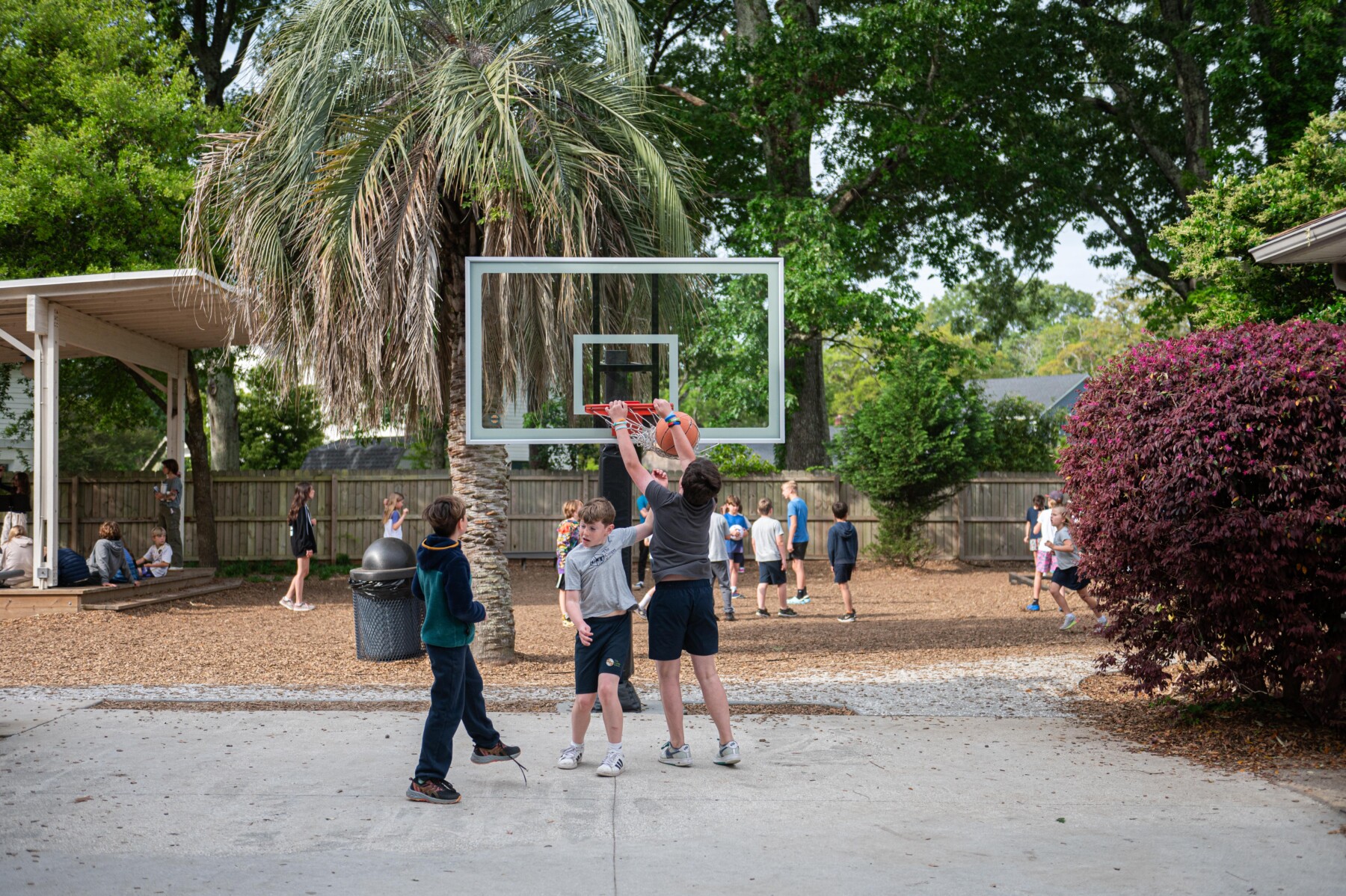
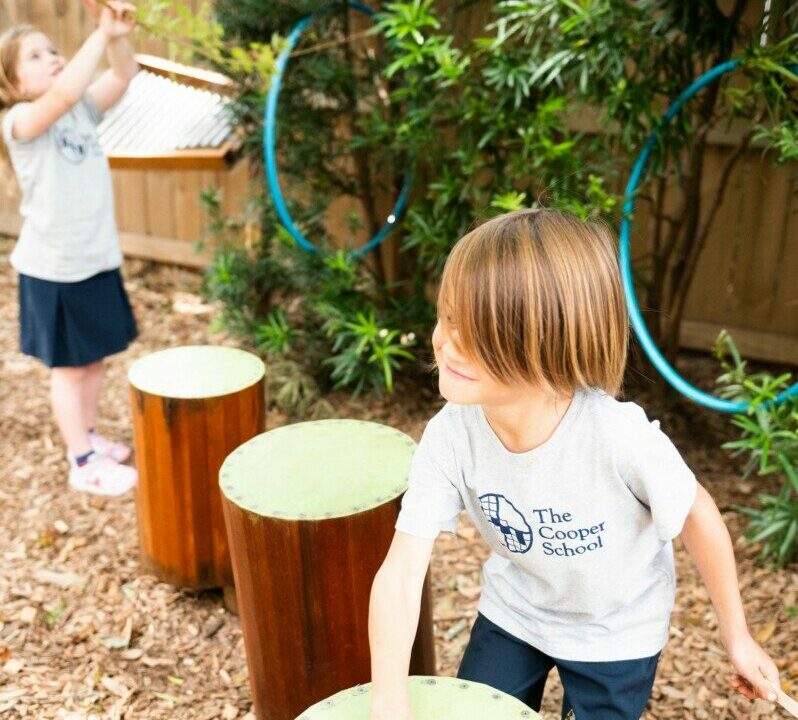
The Third Grade music class includes a year-long project in which the students create a short movie. They write, act, and create characters, art, and music to express their ideas. Students navigate what story they are going to tell and how they are going to tell it. Students provide the majority of the music, allowing students to create new songs for their scenes or demonstrate musical pieces they’ve brought from home. With this project, the students learn how to negotiate with each other respectfully. They know how to lead, follow, accept, reject ideas, encourage, and correct each other. The year ends with a class viewing of the movie and an awards ceremony.
The Third and Fourth Grade curriculum explores various music from around the world. Students learn foundational techniques of two and three-part singing and develop a richer understanding of ensemble performance.
Students refine postures and breathwork balancing effort and ease. We’ll continue to navigate how to mindfully handle all of life’s little lessons. Toward the end of the school year the students create a yoga sequence together that we will also practice throughout the rest of our time together. The class is 45 minutes and will incorporate breathwork, yoga poses, rest and meditation.
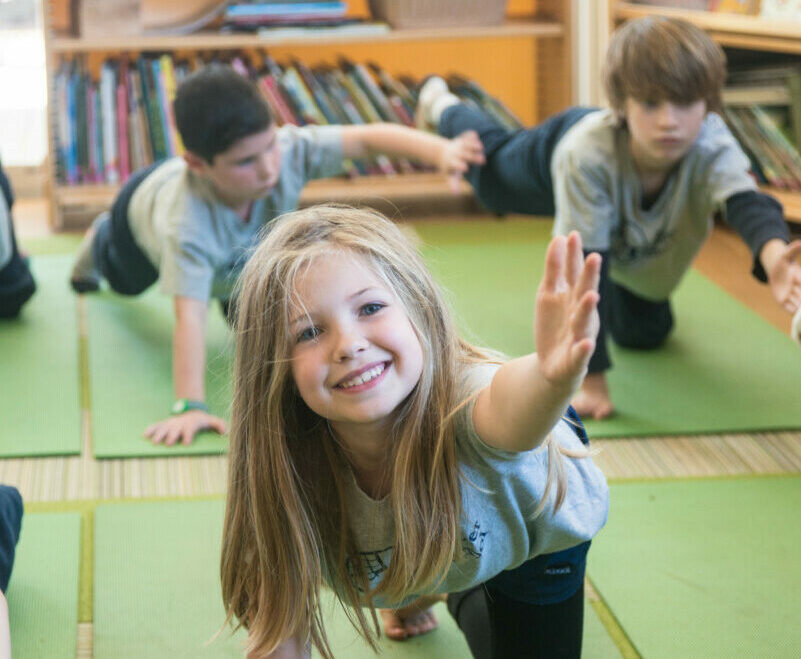
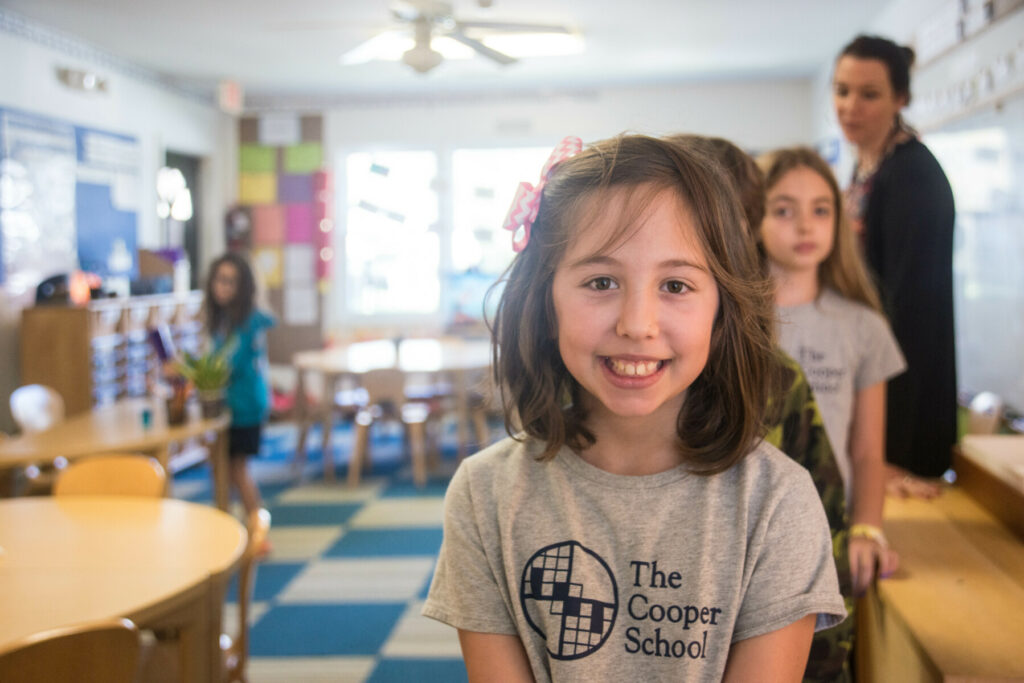
Students grow their confidence and expand their vocabulary in these years of Spanish. Language acquisition is still key, however, we also begin raising their social conscience and cultivating interest in Spanish culture. We integrate the Waldorf World Language Approach into lesson plans by leading students through a wide range of activities and giving them adequate room and opportunity to move their bodies, sing songs, create projects, and more. We engage the imagination through the senses: students will interact with natural elements like the weather when discussing “¿Qué hace el tiempo?”, they will create menus and tasteactual Spanish food. These types of real-world applications allow students to take ownership of their language skills and understand its greater purpose.